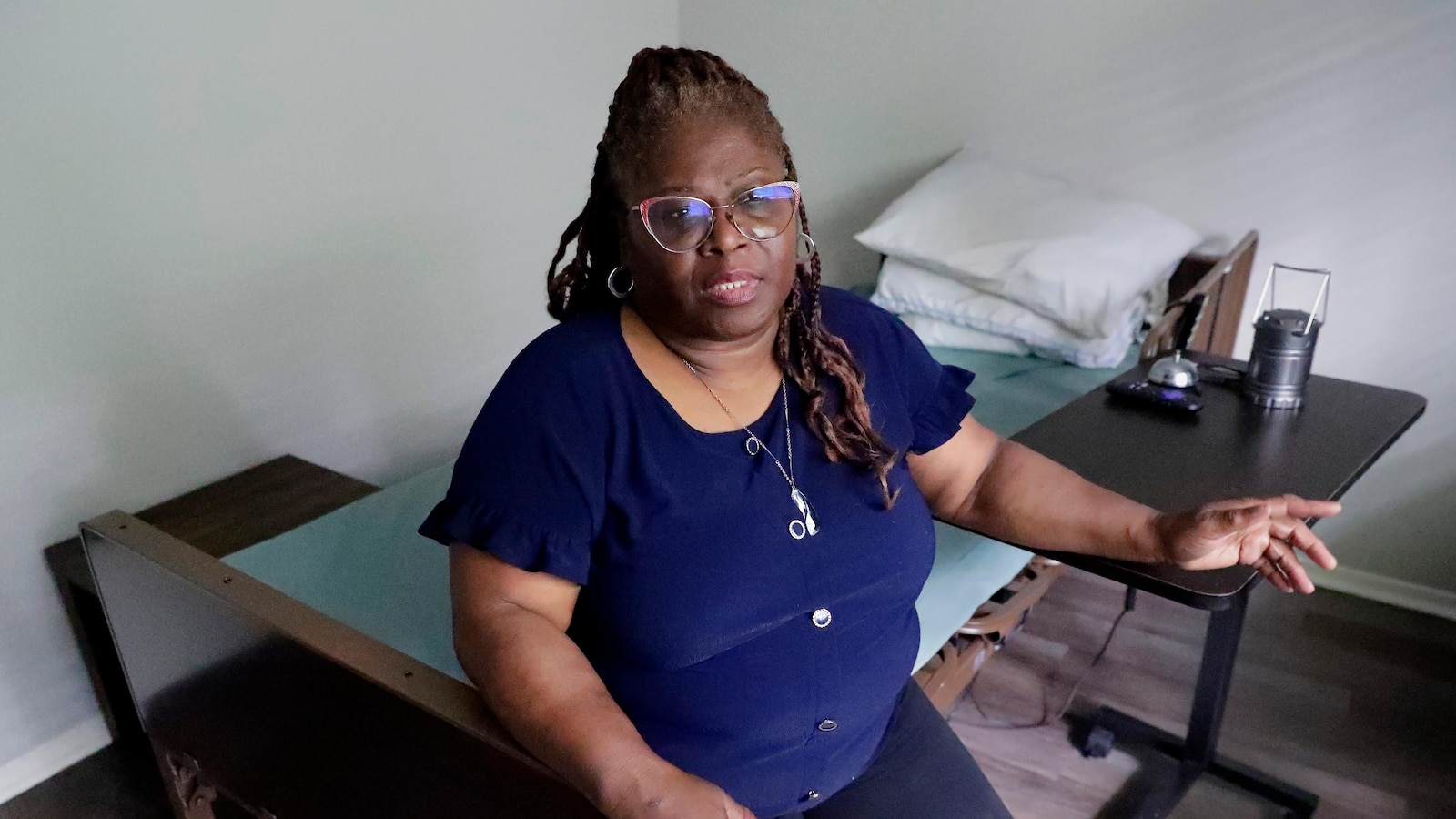
SPRING, Texas — As the temperature soared in the Houston-area home Janet Jarrett shared with her sister after losing electricity in Hurricane Beryl, she did everything she could to keep her 64-year-old sibling cool.
But on their fourth day without power, she awoke to hear Pamela Jarrett, who used a wheelchair and relied on a feeding tube, gasping for breath. Paramedics were called but she was pronounced dead at the hospital, with the medical examiner saying her death was caused by the heat.
“It’s so hard to know that she’s gone right now because this wasn’t supposed to happen to her,” Janet Jarrett said.
Almost two weeks after Beryl hit, heat-related deaths during the prolonged power outages have pushed the number of storm-related fatalities to at least 23 in Texas.
The combination of searing summer heat and residents unable to power up air conditioning in the days after the Category 1 storm made landfall on July 8 resulted in increasingly dangerous conditions for some in America’s fourth-largest city.
Beryl knocked out electricity to nearly 3 million homes and businesses at the height of the outages, which lasted days or much longer, and hospitals reported a spike in heat-related illnesses.
Power finally was restored to most by last week, after over a week of widespread outages. The slow pace in the Houston area put the region’s electric provider, CenterPoint Energy, under mounting scrutiny over whether it was sufficiently prepared.
While it may be weeks or even years before the full human toll of the storm in Texas is known, understanding that number helps plan for the future, experts say.
Just after the storm hit, bringing high winds and flooding, the deaths included people killed by falling trees and people who drowned when their vehicles became submerged in floodwaters. In the days after the storm passed, deaths included people who fell while cutting limbs on damaged trees and heat-related deaths.
Half of the deaths attributed to the storm in Harris County, where Houston is located, were heat related, according to the Harris County Institute of Forensic Sciences.
Jarrett, who has cared for her sister since she was injured in an attack six years ago, said her “sassy” sister had done everything from owning a vintage shop in Harlem, New York, to working as an artist.
“She had a big personality,” Jarrett said, adding that her sister had been in good health before they lost electricity at their Spring home.
With power outages and cleanup efforts still ongoing, the death toll likely will continue to climb.
Officials are still working to determine if some deaths that have already occurred should be considered storm related. But even when those numbers come in, getting a clear picture of the storm’s toll could take much more time.
Lara Anton, a spokesperson for the Texas Department of State Health Services, which uses death certificate data to identify storm-related deaths, estimated that it may not be until the end of July before they have even a preliminary count.
In the state’s vital statistics system, there is a prompt to indicate if the death was storm related and medical certifiers are asked to send additional information on how the death was related to the storm, Anton said.
Experts say that while a count of storm-related fatalities compiled from death certificates is useful, an analysis of excess deaths that occurred during and after the storm can give a more complete picture of the toll. For that, researchers compare the number of people who died in that period to how many would have been expected to die under normal conditions.
The excess death analysis helps count deaths that might have been overlooked, said Dr. Lynn Goldman, dean of the Milken Institute School of Public Health at George Washington University.
Both the approach of counting the death certificates and calculating the excess deaths have their own benefits when it comes to storms, said Gregory Wellenius, director of the Boston University School of Public Health’s Center for Climate and Health.
The excess death analysis gives a better estimate of the total number of people killed, so it’s useful for public health and emergency management planning in addition to assessing the impact of climate change, he said.
But it “doesn’t tell you who,” he said, and understanding the individual circumstances of storm deaths is important in helping to show what puts individual people at risk.
“If I just tell you 200 people died, it doesn’t tell you that story of what went wrong for these people, which teaches us something about what hopefully can we do better to prepare or help people prepare in the future,” Wellenius said. ___
Stengle reported from Dallas. Sean Murphy contributed to this report from Oklahoma City.
In February 2021, Texas experienced a devastating winter storm named Beryl that caused widespread power outages across the state. While the storm brought freezing temperatures and heavy snowfall, the aftermath of the power outages has led to a concerning increase in heat-related deaths in Texas.
The power outages left millions of Texans without electricity for days, causing homes to lose heat and leaving residents vulnerable to extreme cold temperatures. As a result, many Texans turned to alternative sources of heat, such as generators, fireplaces, and space heaters, to stay warm. However, these sources of heat can pose serious risks if not used properly, leading to carbon monoxide poisoning, fires, and other hazards.
As the power outages continued, temperatures began to rise in Texas, reaching dangerous levels in some areas. The combination of extreme heat and lack of access to air conditioning put many residents at risk of heat-related illnesses, such as heat exhaustion and heat stroke. According to reports from local authorities, there has been a significant increase in heat-related deaths in Texas following the power outages caused by the Beryl storm.
The increase in heat-related deaths highlights the importance of being prepared for extreme weather events and power outages. It is crucial for residents to have a plan in place to stay safe and cool during heatwaves, especially in the absence of air conditioning. This may include seeking shelter in cooling centers, staying hydrated, and avoiding strenuous outdoor activities during the hottest parts of the day.
Additionally, it is essential for residents to be cautious when using alternative sources of heat during power outages. Generators should be placed outside of the home to prevent carbon monoxide poisoning, and space heaters should be used with caution to avoid fires and burns. It is also important to check on vulnerable populations, such as the elderly and those with medical conditions, to ensure their safety during extreme weather events.
In response to the increase in heat-related deaths following the Beryl storm, local authorities are working to improve emergency response plans and educate residents on how to stay safe during power outages and extreme weather events. By taking proactive measures and being prepared for emergencies, Texans can reduce the risk of heat-related illnesses and deaths in the future.


